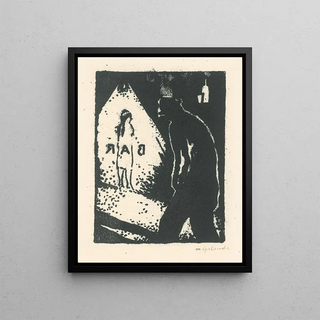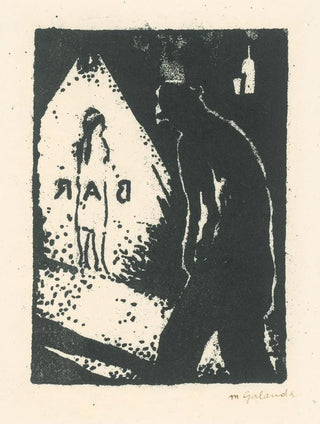Art print | Bar - Mikuláš Galanda


View from behind

Frame (optional)
Reproduction Bar - Mikuláš Galanda – Captivating Introduction
In the fascinating world of art, some works manage to capture the essence of an era, a place, or an emotion so authentically that they transcend time. The art print Bar - Mikuláš Galanda is one of those creations that invites deep immersion into the artistic universe of the early 20th century. This piece, which evokes both the conviviality of public spaces and the complexity of human interactions, proves to be a true mirror of the society of its time. Through this representation, Galanda does not merely paint a simple bar; he creates a living tableau, where each character and every detail tell a story, an atmosphere, a culture.
Style and uniqueness of the work
Mikuláš Galanda's style is characterized by a unique approach that combines realism with modern sensitivity. In the art print Bar, vibrant colors and dynamic shapes blend to bring to life a scene that is both familiar and poetic. The characters, although frozen in time, seem animated by a palpable energy, as if they are about to come to life before our eyes. The play of shadow and light, typical of Galanda's art, helps create a depth that invites the viewer to engage emotionally with the work. This ability to transform everyday moments into scenes of great intensity truly distinguishes the artist and makes this piece a must-have for art enthusiasts.
The artist and his influence
Mikuláš Galanda, an emblematic figure of Slovak art, knew how to mark his era with an innovative and bold vision. Born in 1895, he was influenced by European artistic movements of his time, notably Surrealism and Expressionism. His work, rich in emotion and reflections on the human condition, bears witness to a deep commitment to his country and culture. Galanda also played a crucial role in promoting Slovak artists, contributing to the emergence of a national artistic identity. Through his paintings, he paved the way for a new understanding of art, where subjectivity and personal expression took precedence over established conventions. His legacy end

Matte finish

View from behind

Frame (optional)
Reproduction Bar - Mikuláš Galanda – Captivating Introduction
In the fascinating world of art, some works manage to capture the essence of an era, a place, or an emotion so authentically that they transcend time. The art print Bar - Mikuláš Galanda is one of those creations that invites deep immersion into the artistic universe of the early 20th century. This piece, which evokes both the conviviality of public spaces and the complexity of human interactions, proves to be a true mirror of the society of its time. Through this representation, Galanda does not merely paint a simple bar; he creates a living tableau, where each character and every detail tell a story, an atmosphere, a culture.
Style and uniqueness of the work
Mikuláš Galanda's style is characterized by a unique approach that combines realism with modern sensitivity. In the art print Bar, vibrant colors and dynamic shapes blend to bring to life a scene that is both familiar and poetic. The characters, although frozen in time, seem animated by a palpable energy, as if they are about to come to life before our eyes. The play of shadow and light, typical of Galanda's art, helps create a depth that invites the viewer to engage emotionally with the work. This ability to transform everyday moments into scenes of great intensity truly distinguishes the artist and makes this piece a must-have for art enthusiasts.
The artist and his influence
Mikuláš Galanda, an emblematic figure of Slovak art, knew how to mark his era with an innovative and bold vision. Born in 1895, he was influenced by European artistic movements of his time, notably Surrealism and Expressionism. His work, rich in emotion and reflections on the human condition, bears witness to a deep commitment to his country and culture. Galanda also played a crucial role in promoting Slovak artists, contributing to the emergence of a national artistic identity. Through his paintings, he paved the way for a new understanding of art, where subjectivity and personal expression took precedence over established conventions. His legacy end






